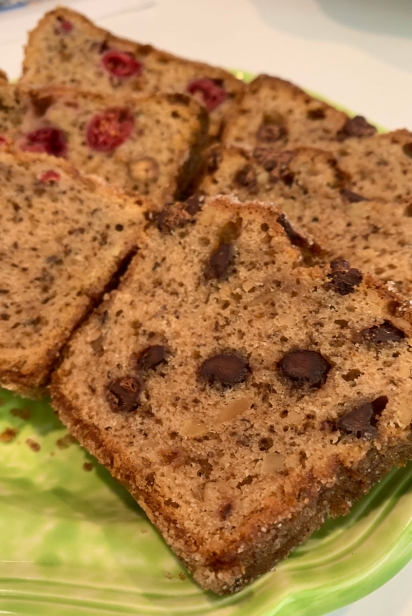Sharing Sourdough: Aunt Natalie's Friendship Bread
Twelve years ago, writer Ellen Kanner wrote in the Miami Herald about her aunt Natalie’s experience with Friendship Bread, a cinnamon-y quick bread made with a sweet sourdough starter intended to be shared with friends. At the time, her aunt’s sourdough had been going strong for 11 years and her breads were shared with friends and neighbors from coast to coast. Kanner suggested we check in with her aunt to check on the latest with her Friendship Bread.
Last year, aunt Natalie (Segal) had to go into the hospital so couldn’t tend to her 20-year-old starter. So she came up with a fresh batch and started baking again every 10 days. (Segal says she has since learned you can freeze your starter to put it on hold.) She’s back to baking her breads and coming up with various add-ons. “Chocolate chips and nuts is the most requested,” she says. “Apple nut and cranberry nut are popular, too.” Whatever the flavor, the moist loaves are a welcome gift for many. “I give it to the neighbor, the gardener, the doctor,” she says. “It’s a way of doing a good deed.”
The Story of Friendship Bread
Artisan bakers are known to keep their sourdough starter for years, traveling with it and making preparations to store safely it in case of natural disasters or other disruptions. Friendship Bread, sometimes known as Amish Friendship Bread, is based on a sweet sourdough that is meant to be shared, along with baked loaves, as a sort of edible chain letter. The recipe has been around for decades and shows up in church and regional cookbooks as a community project. Segal recalls a Boy Scout troop making blueberry loaves to ship overseas.
Today, the website Friendship Bread Kitchen explores this neighborly phenomenon and includes variations on the recipe with handy printable recipes to give with the starter. Making the starter requires only flour, sugar and evaporated milk or shelf-stable milk combined in a zipper-top bag with instructions to mash (or “mush”) the bag periodically, then feed the dough according to a schedule. When it’s ready, the recipe makes enough starter to share. Of course, the bread loaves are meant to be given away, too.







